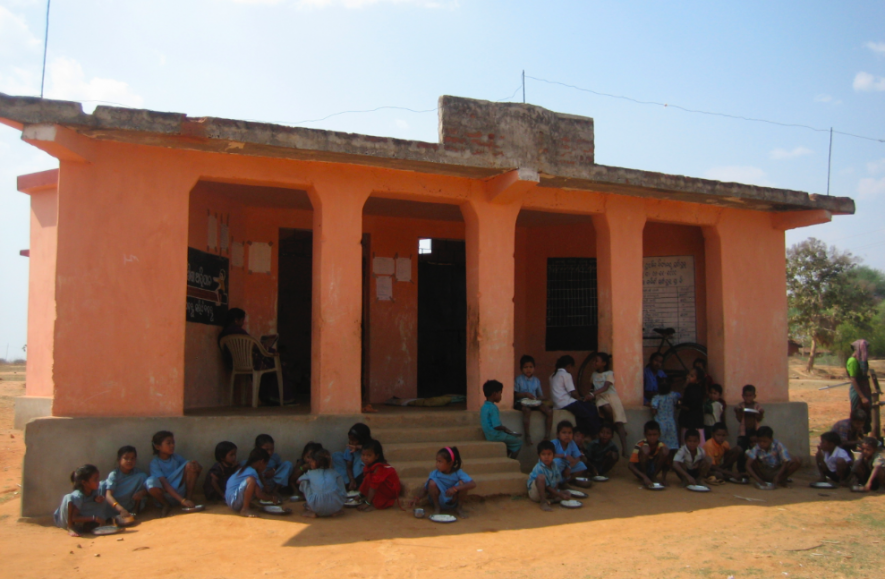As 2017 Ends, India is One Step Closer to Pushing Education Out of Reach for the Many

The education sector in India did not have much to cheer about in 2017. The trend of declining government expenditure continued as did the wave of saffronisation of institutions under the BJP government.
The country awaits the new education policy, being worked upon by a panel headed by scientist K Kasturirangan, after the Modi government did not accept in toto the recommendations made by the TSR Subramanian Committee.
But the shape of things to come only became clearer this year, as higher education marched further on the road to becoming unaffordable for most while school education continued to be ignored.
For the 2017-18 financial year, the central government’s budgeted expenditure on education as a share of the GDP dipped to 0.47% from last year’s 0.49%. And within this budgeted expenditure, the all-important Sarva Shiksha Abhiyan for schools – aimed at universalisation of elementary education – saw an increase of only 4%.
And primary education continued to face the most severe neglect, making sure that the majority of kids in the country do not even manage to reach higher education.
To make things worse, the BJP-led NDA government is trying its best to change the No-Detention Policy, introduced under the Right to Education Act 2009, which mandated that school-going children not be failed until Class 8.
Given the state of the country’s government schools, the policy ensured that the most deprived of our children stay in school at least until elementary education – even as it was wrongly blamed by many state governments for declining academic standards.
The Cabinet has already approved that the policy be revised to begin failing children after Class 5. The amendment now awaits Parliament approval.
As for higher education, the government continued with policies meant to push colleges and universities to become “self-financing”, which basically means funding through the fees students pay, destroying the accessible character of public education institutions even as private universities proliferate.
Even for the sections of the middle class that can afford to study at any of the existing good-quality government universities, things are going to become more difficult.
On August 24, the University Grants Commission (UGC) approved the plan to grant graded autonomy to all universities – public, private and deemed – based on their ranking as per the National Assessment and Accreditation Council (NAAC) and the two-year-old National Institutional Ranking Framework (NIRF).
This autonomy includes financial autonomy, which has two main implications – the “top” universities would be free to decide their fee structures and any “autonomous” decision by the university would be financed by the university itself, either by becoming ‘self-financing’ or through private partnerships.
The government had last year approved the setting up of the Higher Education Financing Agency, which will raise money from the debt market and lend it to centrally funded higher education institutions for infrastructure expansion.
The borrowing institution won’t have to pay loan, but will have to pay back the principal amount through its own internal resources.
In November, the HEFA approved projects for Rs. 2,066.73 Cr to six higher education institutions (including the IITs, which are already becoming unaffordable, and some branches of which witnessed fee hikes this year as well).
And whatever universities do remain accessible, the government massively cut the number of seats for research (MPhil and PhD) with the UGC notification earlier this year putting a cap on the number of students a professor can guide. Given that most universities in India remain understaffed, this meant that even the tiny section of the students who do manage to reach the research level will now be deprived. For example, JNU saw a cut of 82.81% in the research seats from the 1408 approved for this year by its Academic Council.
Meanwhile, the RSS agenda of saffronisation of education was furthered by the BJP.
As for the fertile ground of schools, the BJP-ruled states saw a blatant saffron attack. In Uttar Pradesh, there was a government directive earlier this month to organise singing competitions based on the Bhagavad Gita across the state.
And the rewriting of school textbooks in Rajasthan to align the education to Hindutva aims are well-known by now.
Even prestigious scientific institutions like the IITs are no longer exempt, with IIT Delhi set to see studies on the benefits of cow urine under a government-constituted panel (after workshops on similar subjects were conducted last December at Delhi and Bombay).
At Banaras Hindu University in Uttar Pradesh, students appearing for the examination of Master of Arts in Political Science were made to answer questions such as “Manu is the first Indian thinker of Globalisation; Discuss”.
Bhopal-based Makhanlal Chaturvedi National University of Journalism and Communication is reportedly being turned into an “RSS propaganda laboratory”.
In Assam, the BJP government came under fire for its decision to start 22 government colleges named after RSS icon Deendayal Upadhyaya.
In Vadodara in Gujarat, the official diary for 2017 of Maharaja Sayajirao University celebrated several sages for their “contribution to science” – from “developing nuclear technology” (Acharya Kanad) to “discovering rockets and aeroplanes” (Maharshi Bhardwaj).
These are only some of the examples of the fast-tracked destruction of the “public” character of the government education institutions as well as the attempts to realise the RSS-BJP dream of a saffron country through schools and colleges.
Things do not seem to be looking up too much for next year, unless the resistance movements by students and teachers across the country – boiling over in batches – become more organised and persist in saving education, to ensure that more and more youngsters in the future can access education and not the other way around – the way we are currently headed.
Get the latest reports & analysis with people's perspective on Protests, movements & deep analytical videos, discussions of the current affairs in your Telegram app. Subscribe to NewsClick's Telegram channel & get Real-Time updates on stories, as they get published on our website.























